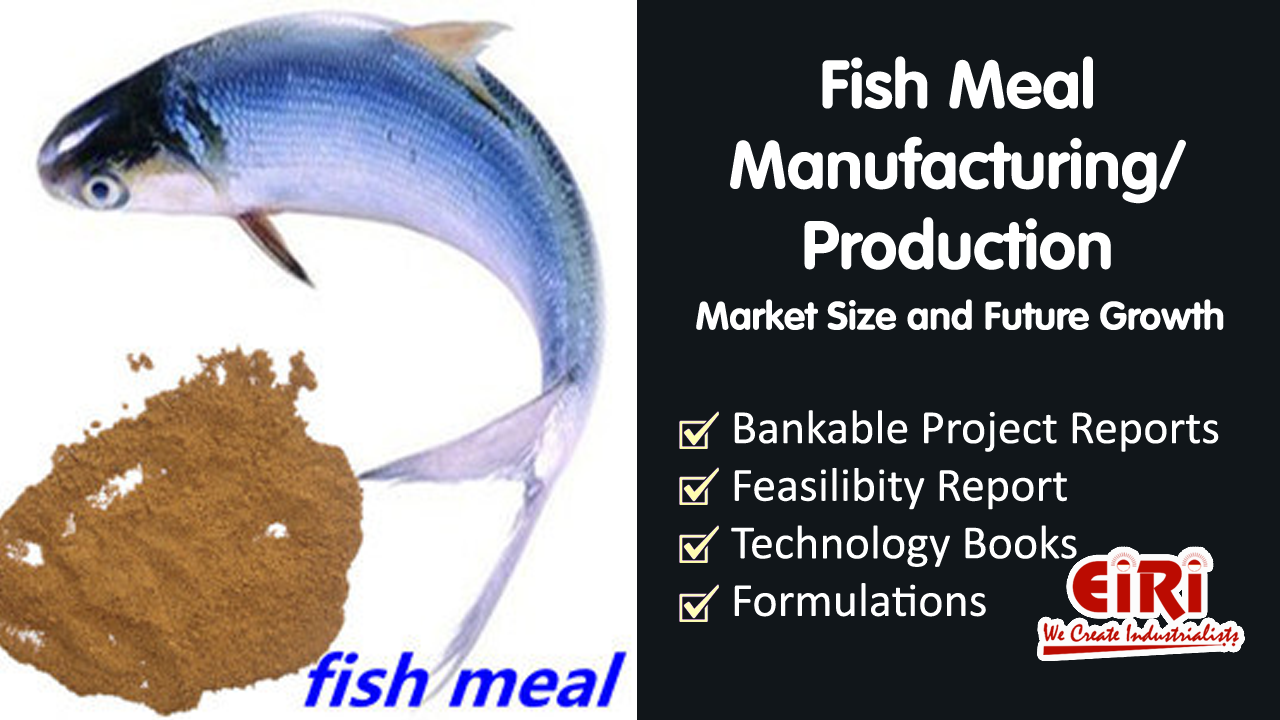Fish Meal Manufacturing Business
The fishmeal & fish oil market is estimated at USD 9,500.99 million in 2017 and is projected to reach USD 14,288.46 billion by 2022, growing at a CAGR of 8.5% during the forecast period.
Overview of Fish Meal Industry
Fishmeal is the flour processed from the fish after drying and milling its selective body parts. Fish meal is produced by removing 90-95% of water and fat present in the fish. Oily pelagic fish is the most widely used for making the fish meal. Fish meal is a good source of micro minerals, oil-soluble vitamins, and water-soluble vitamins.
It is commonly used as an additive in animal and fish feed. They constitute high-protein ingredients in animal feeds. Fish meal is never to be fed directly to animals. It needs to be added to animal feeds by following the recommended inclusion rates that may vary for different types of feeds. The global fish meal industry was valued at $8.87 billion in 2019 and will cross $15.8 billion by 2027. It will experience a healthy CAGR of 8.8% during this period.
Fish meal has excellent nutritional properties. It is rich in proteins, cholesterol, fatty acids, minerals, and certain vitamins. They are widely used in poultry, swine, aquaculture, etc. Depending on the raw material used, the fish meal can contain 40-60% protein which makes it a concentrated protein source. It is also a rich source of amino acid lysine, which is deficient in most varieties of legumes and cereals.
Manufacturing Process
The manufacturing process of fish meal is focused on reducing 90-95% of the total moisture content in the fish. The oil content also should not be more than 10%. There are two major manufacturing processes for the fish meal- the wet reduction method and the dry reduction method. The wet reduction process is more commonly used. It is suitable for both low-fat and high-fat raw materials. The dry reduction method is only suitable for low-fat raw materials.
Future Scope and Demand
The fish meal market is segmented based on its application, end-users, source, livestock, and nature. It is categorized into animal feed, dietary supplements, and pharmaceuticals and fertilizers based on application. The end-user segment is divided into aquaculture, poultry, swine, etc. The nature segment of the fish meal market is divided into organic and algorithm.
The global fish meal market is experiencing healthy growth. This is driven by the collaboration between fishery farms and governments. There is also increasing awareness and demand among consumers for fertilizers with natural additives. Other key drivers for the fish meal industry during the period 2020-2027 include increasing fish consumption, awareness about benefits of fish meal, growing aquaculture industry, etc.
Based on the source, salmon, and trout fish account for the largest revenue share of the global fish meal market. They account for 42.6% of the total global market. Among the industrial applications, the pharmaceutical segment is the largest revenue contributor with a share of 37.8%. The Asia Pacific has the largest share of the global fish meal market with a consumption of 39.2%. The region is expected to continue its dominance due to a rapid increase in aquaculture. The European fish meal market is also expected to remain strong.
Project Reports:
Project Report On Fish Meal
Project Report on Fish Meal includes Present Market Position and Expected Future Demand, Technology, Manufacturing Process, Investment Opportunity, Plant Economics and Project Financials. Report provides a comprehensive analysis from industry covering detailed reporting and evaluates the position of the industry by providing insights to the SWOT analysis of the industry.
Each report include Plant Capacity, requirement of Land & Building, Plant & Machinery, Flow Sheet Diagram, Raw Materials detail with suppliers list, Total Capital Investment along with detailed calculation on Rate of Return, Break-Even Analysis and Profitability Analysis. The report also provides a birds eye view of the global industry with details on projected market size and then progresses to evaluate the industry in detail.




